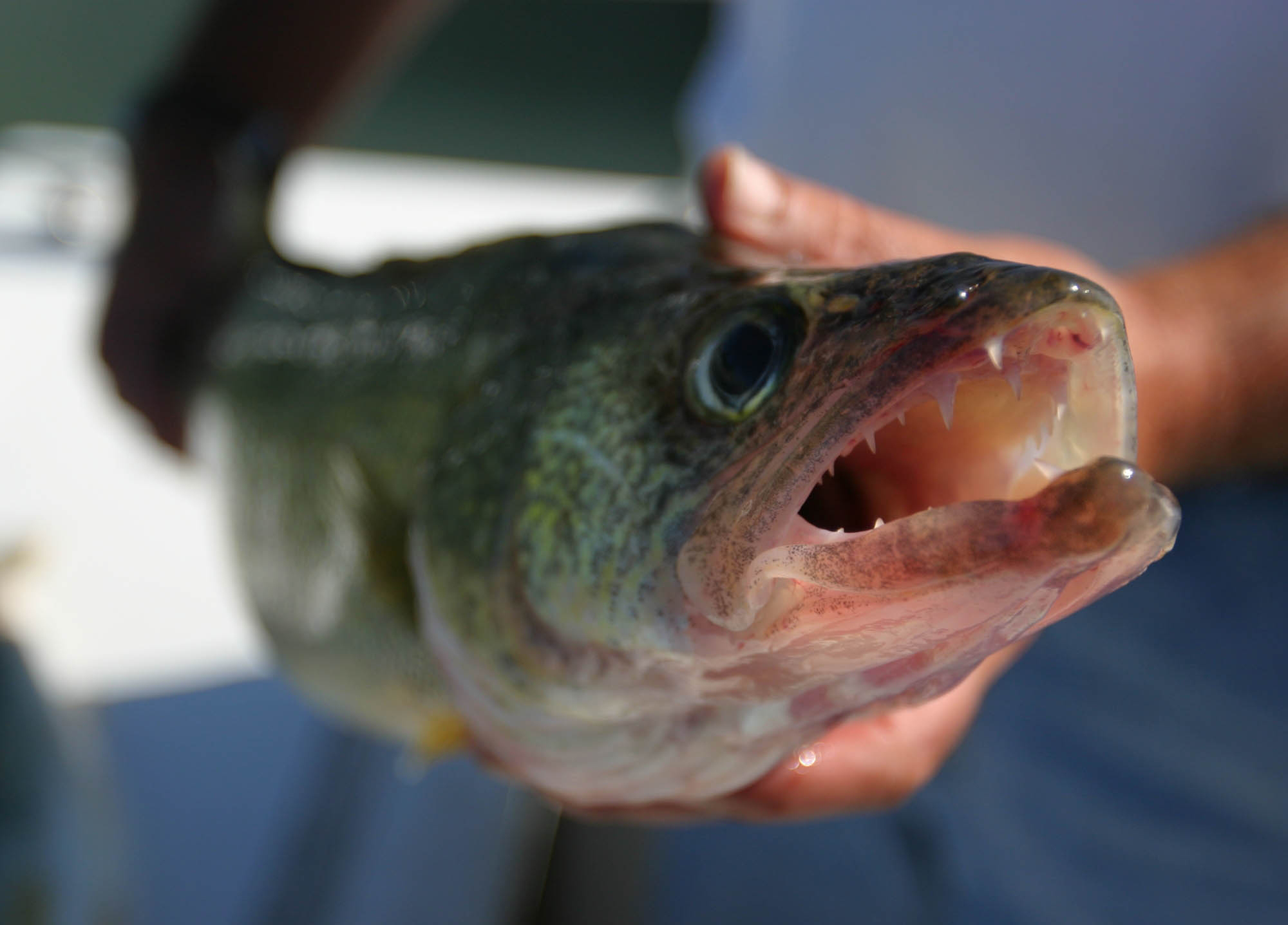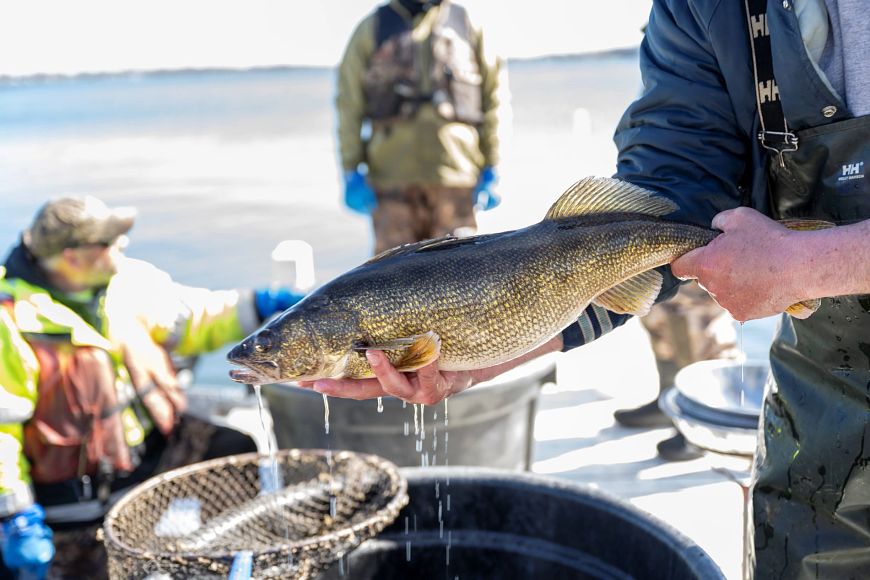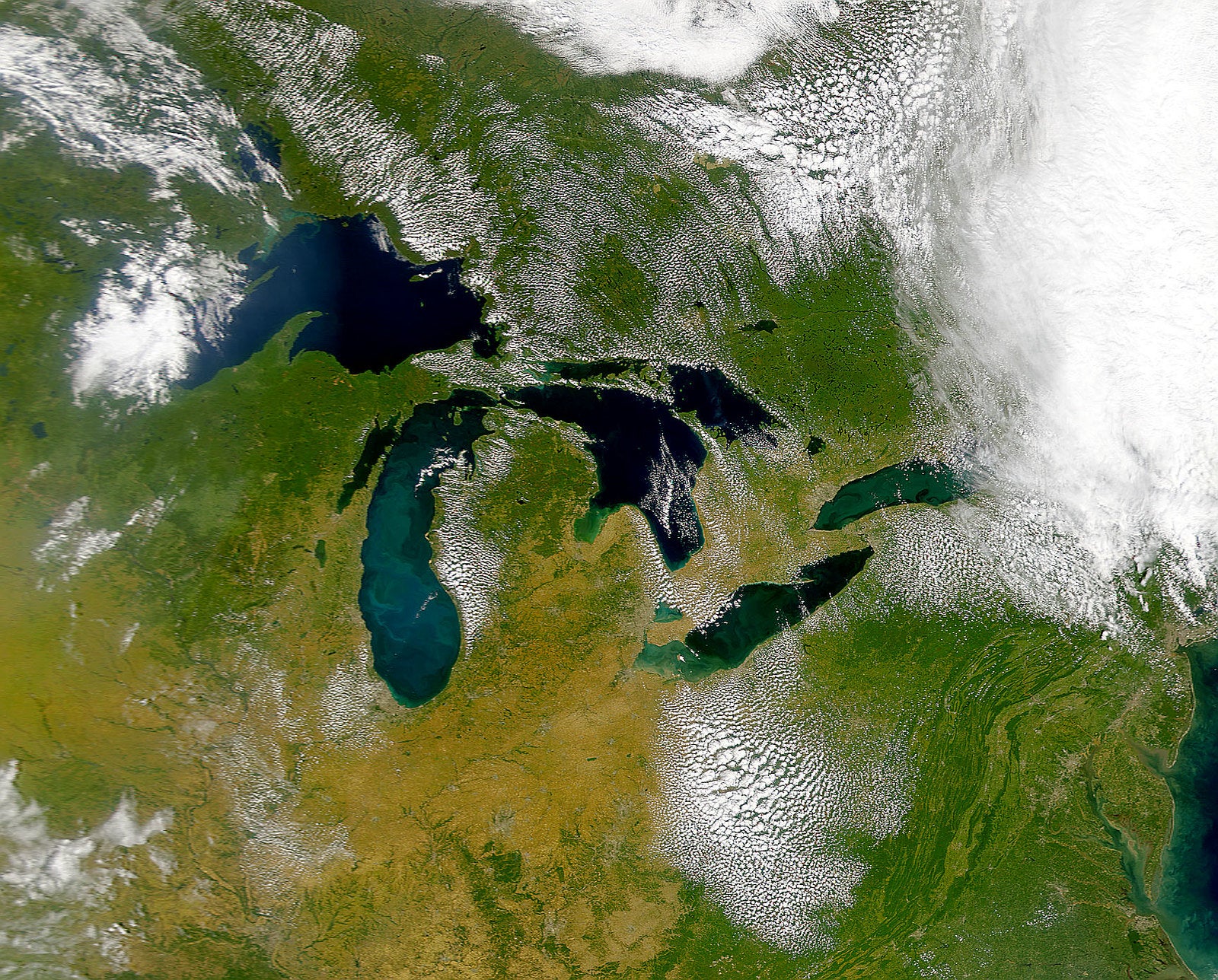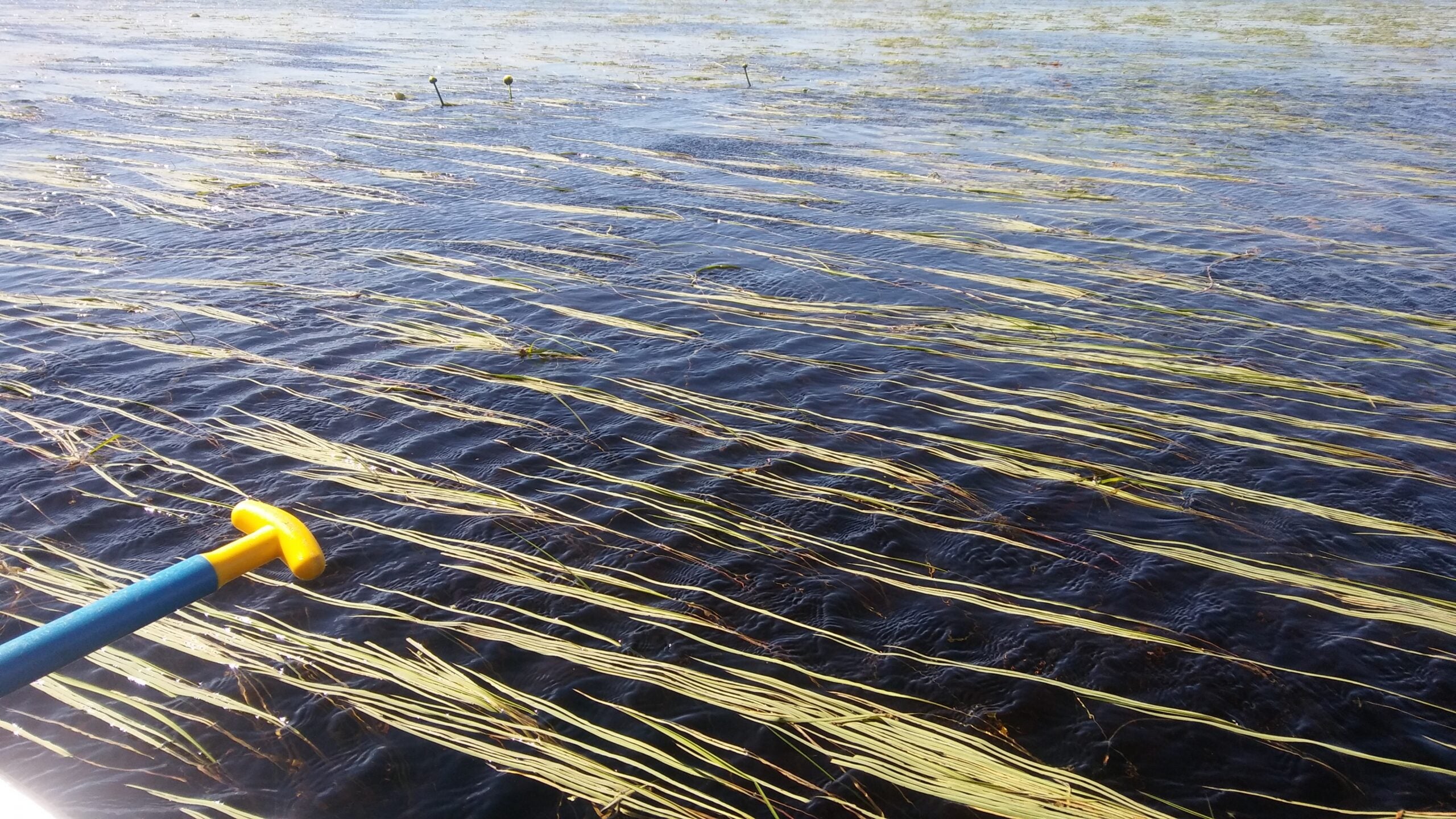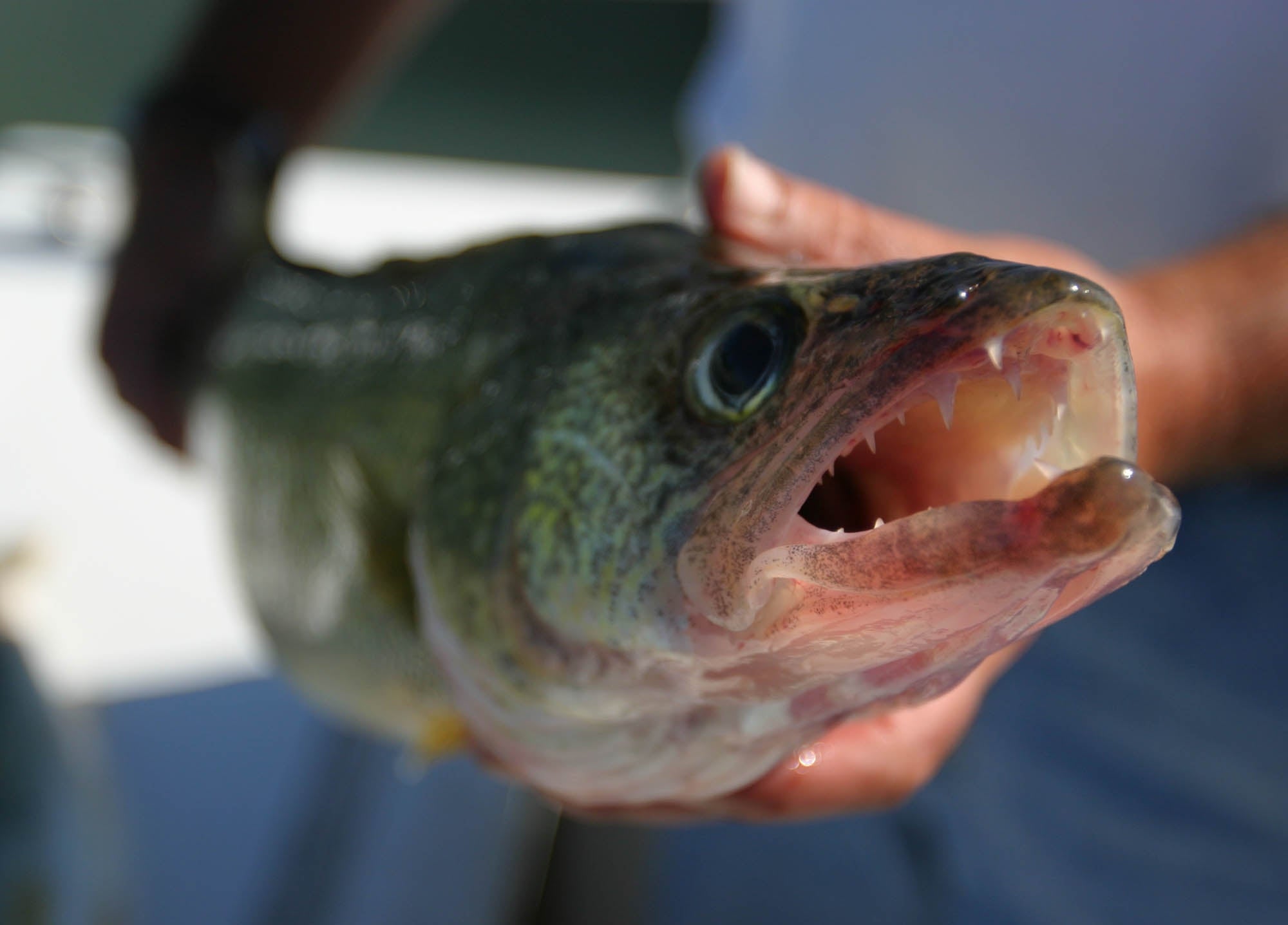Climate change is threatening fish like walleye that thrive in cool waters across Wisconsin as rising temperatures warm inland lakes, and a new report finds it may be time for state and tribal managers to rethink strategies to resist those changes.
Walleye, known as ogaa to Ojibwe tribes, are declining in some lakes as recruitment or the survival of younger fish has dropped in Wisconsin. The species consistently ranks as state anglers’ favorite catch, and walleye are culturally significant to Ojibwe tribes in Wisconsin whose communities rely on the fish for food.
Wisconsin stocks hundreds of thousands of walleye fingerlings and more than 10 million fry each year, according to the Wisconsin Department of Natural Resources. But, a report published this spring in the journal Fisheries Management and Ecology finds future strategies will likely require accepting or adapting to changing conditions.
News with a little more humanity
WPR’s “Wisconsin Today” newsletter keeps you connected to the state you love without feeling overwhelmed. No paywall. No agenda. No corporate filter.
“Moving forward, climate change is probably going to outstrip our ability to resist it in its entirety,” said Zach Feiner, the report’s lead author and a research scientist for the DNR and the University of Wisconsin-Madison’s Center for Limnology. “There may be places where we might need to start thinking about shifting to either accepting or directing ecosystem changes in the future.”
Feiner said that doesn’t mean walleye are going to disappear from Wisconsin, noting the fish is thriving in many lakes and rivers.
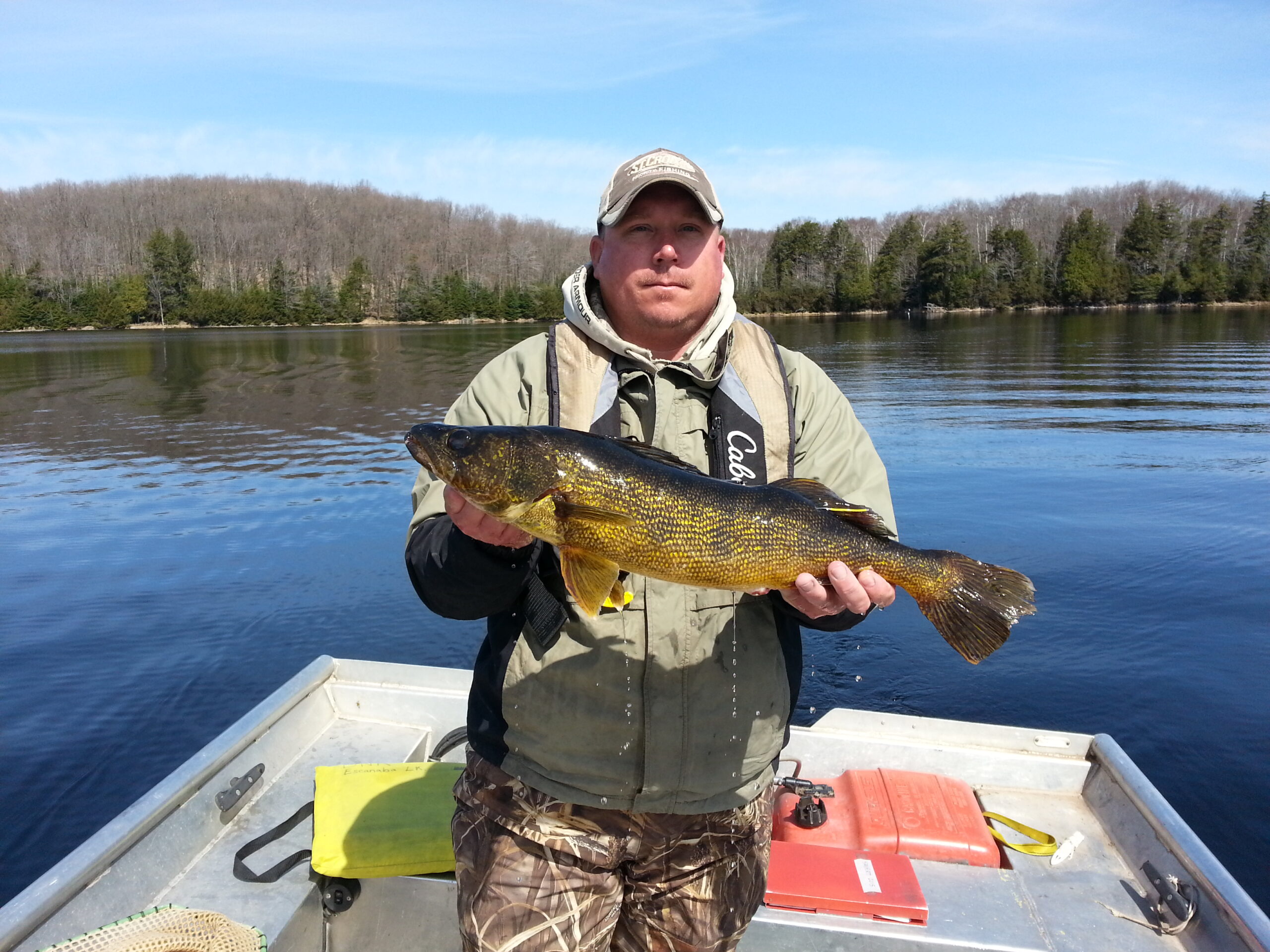
The report suggests a “resist-accept-direct” framework to address changes linked to rising temperatures.
“Where we’re thinking about these types of shifting strategies is really in these lakes that are warming so much that walleye are actually losing habitat,” Feiner said.
The DNR forecasts a near-complete loss of cool lakes by the end of the century, according to the report. And walleye aren’t the only species threatened by warming waters. Other species like brook trout and brown trout are projected to lose up to 68 percent and 32 percent of their habitat respectively by mid-century.
For walleye, current strategies to resist the effects of climate change include reduced bag limits, large-scale rehabilitation efforts, and stocking. In the last 50 years, 2.3 billion walleye have been stocked across Wisconsin.
In 2014, the Wisconsin Walleye Initiative aimed to raise more walleye for stocking in lakes most likely to sustain populations through natural reproduction. The state spent $8.2 million on infrastructure improvements and $1.3 million each year for operating costs. The state also provided $2 million in one-time funding for municipal, tribal and private aquaculture facilities.
Feiner said initial assessments of that initiative have shown mixed results that have led to success in some lakes but not others. Holly Embke, co-author of the report and a research fish biologist with the U.S. Geological Survey, said competition from other warm-water fish species like bass and sunfish has been implicated as one potential factor limiting walleye populations.
275K bass and sunfish later, we’re wrapping up year 5 of fieldwork on our whole-lake removal experiment. Another fantastic crew (not pictured wonderful @andersenALs), may even miss McDermott Lake 😉Now to write it all up…@WiscLimnology @uwtroutlake #womeninfisheries #walleye pic.twitter.com/QOlYJM2uoX
— Holly Embke (@fishandbugs) August 4, 2021
Embke recently completed a five-year research project that removed nearly 300,000 fish from McDermott Lake in northern Wisconsin. She said eliminating the competition didn’t increase the Iron County lake’s walleye population.
“We may need to move towards accepting for these warming bass-and sunfish-dominated lakes that walleye are not necessarily going to thrive, and we may need to move towards directing management efforts differently,” said Embke.
She said that may include bolstering fisheries that are likely to thrive under future climate change scenarios, such as warm-water fish like bass and bluegill. Other options may include supporting cool-water species like yellow perch that seem to be less sensitive to climate change and respond well to the removal of warm-water fish.
Embke and Feiner said future strategies may also focus on protecting so-called “bright spots” where cool-water species like walleye are thriving. Those lakes may reveal findings about what practices or rehabilitation efforts are working.
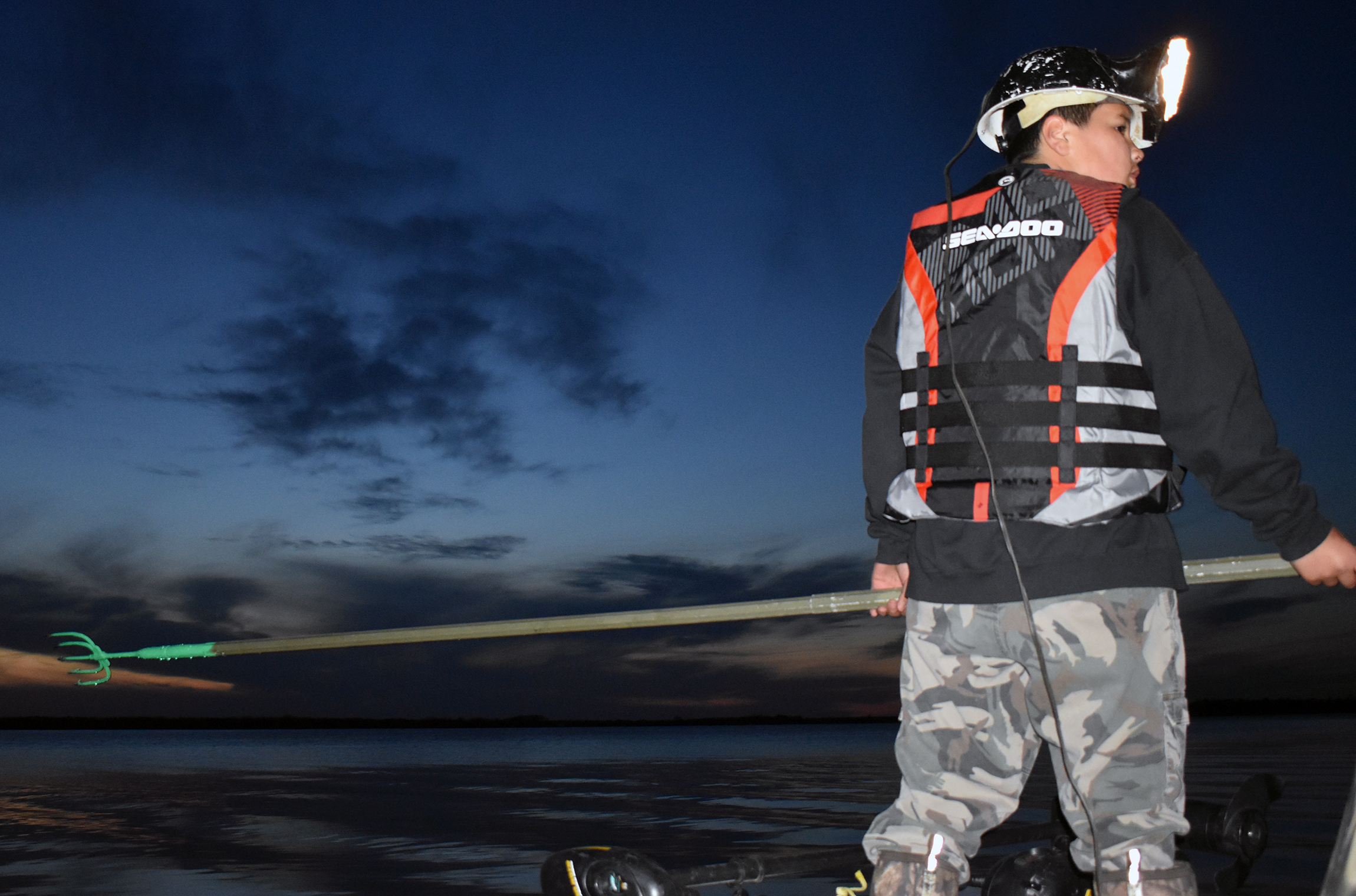
Wisconsin’s Ojibwe tribes don’t want to see walleye disappear from the landscape, according to Aaron Schultz, one of the report’s co-authors and a climate change fisheries biologist with the Great Lakes Indian Fish and Wildlife Commission. He said tribes often notify commission biologists about lakes where walleye survival is floundering or nonexistent.
“The tribes rely on walleye and a lot of these cold-water species for food and for cultural and ceremonial purposes,” said Schultz. “And so, if these beings or these relatives start to disappear across the landscape, that’s going to change quite a few things for the tribes and honestly for the recreational anglers too.”
Schultz pointed out state and tribal agencies don’t have the funding or resources to resist changes tied to warming temperatures, such as through strategies like stocking. Some tribes like the Lac du Flambeau Band of Lake Superior Chippewa have started to look to other species to fulfill their subsistence needs.
“They’ve started to harvest bass and northerns and suckers in greater frequency than they have in the past,” said Schultz. “So, I think it’s kind of two-fold. We’re going to resist as much as we can, but we also see the need to adapt to our changing environment.”
Schultz and the report’s authors say it’s important for state and tribal officials to work together to meet the needs of recreational and tribal fishers.
The Wisconsin DNR is currently accepting public comment through May 31 on an updated draft of its walleye management plan. Wisconsin’s fisheries support nearly 14,000 jobs and contribute $1.9 billion to the state’s economy, according to the American Sportfishing Association.
Wisconsin Public Radio, © Copyright 2025, Board of Regents of the University of Wisconsin System and Wisconsin Educational Communications Board.

